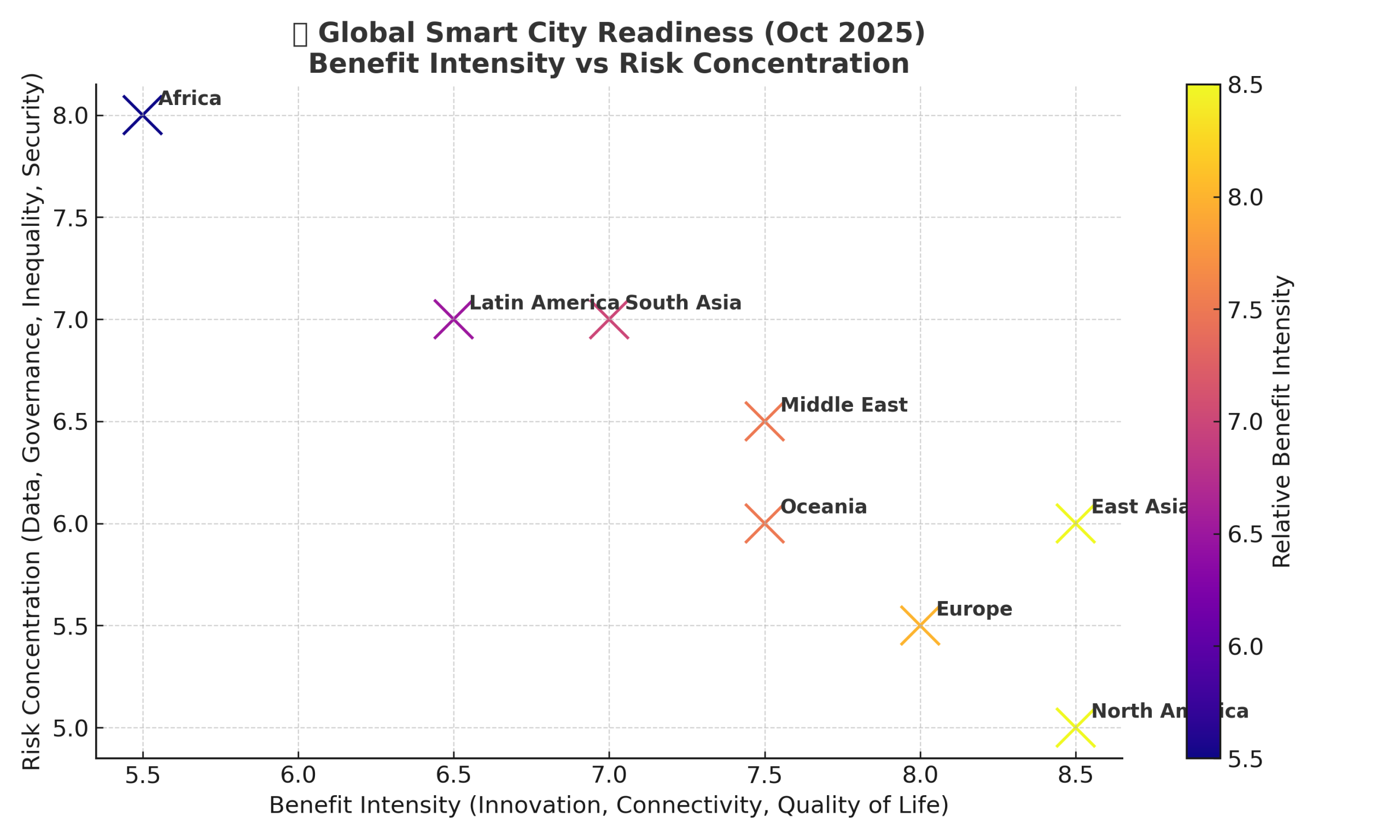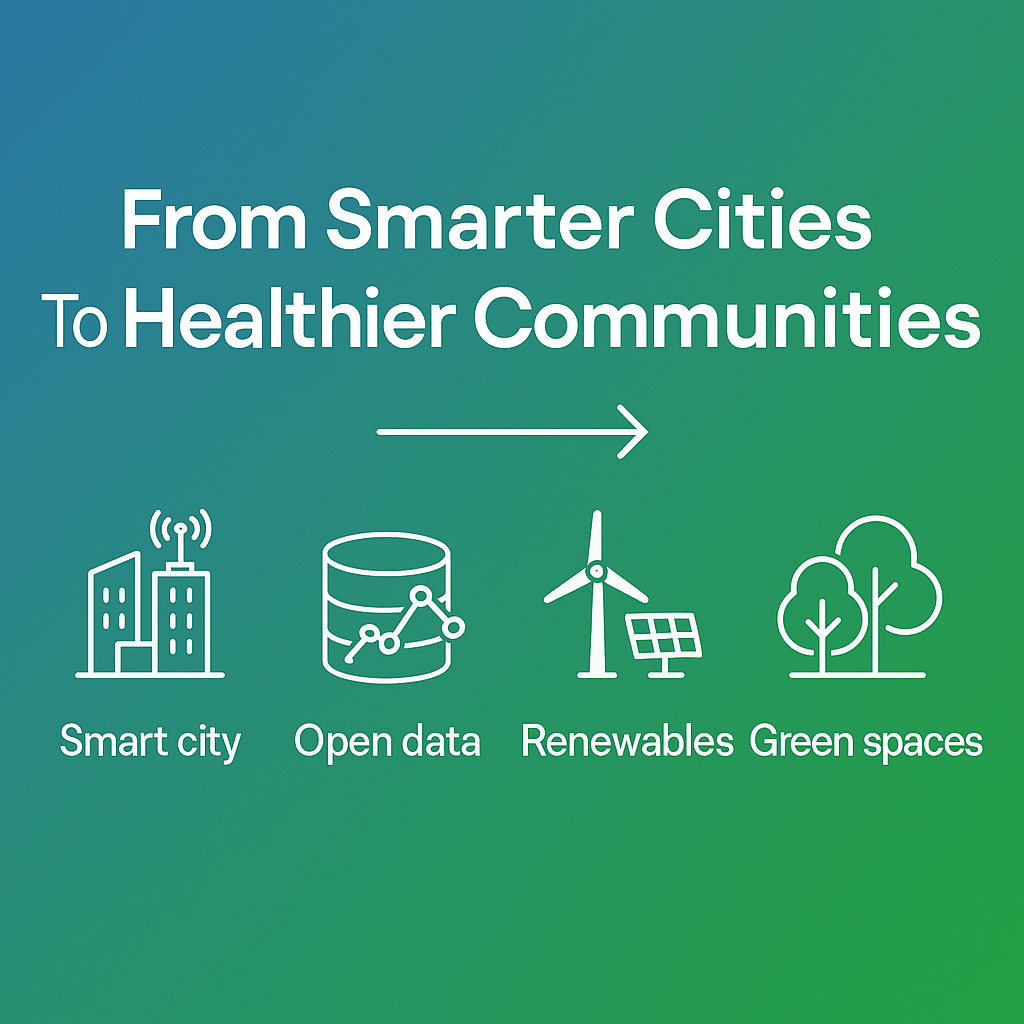️ Notable Smart City Updates / Moves in Oct 4–10, 2025
| Location / Project | What Happened | Notes / Context | Potential Impact / Signals |
|---|---|---|---|
| Kochi, India (CSML / Smart City machines O&M dues) | Kochi Corporation must pay ~₹90 crore (~USD ~11–12 M) as operation & maintenance costs for smart infrastructure (pothole fillers, weed cutters, etc.) acquired via Cochin Smart Mission Ltd (CSML) over 5 years. (The Times of India) | The smart city project has seen repeated deadline extensions; there’s friction between municipal finances and sustaining smart assets. | This is a reminder: capex is only half the story. Cities that deploy smart devices must budget for maintenance, repairs, upgrades. Failure to maintain drains trust and undercuts benefits. |
| Thiruvananthapuram, Kerala, India — Smart Road Upgrades | The Kerala government announced that all roads in the Chalai market area (historic district) will be converted to “smart roads,” with features like underground utility ducts, improved pedestrian walkways, and energy-efficient lighting. (The Times of India) | This extends existing smart infrastructure efforts in Kerala; the idea is to preserve heritage while layering new tech. | Smart roads (with sensors, lighting, utility integration) can help with traffic flow, safety, and lower maintenance costs. But integrating them into older urban fabrics is technically and politically complex. |
| Smart City Expo Miami 2025 — global convergence | A major forum held Oct 7 (and around) that gathered 350+ participants from 20+ countries to showcase technology, policy, and innovation in smarter cities. (Refresh Miami) | While it’s more of an event than a system deployment, it catalyzes partnerships, reveals new pilots, and surfaces new directions (e.g. AI governance, citizen engagement). | These convenings help cities amplify “ideas → pilots” cycles. Cities that engage early may attract funding or collaborations. |
| Smart City Platform Market Forecast (report) | A report published Oct 1 projects the global smart city platforms market will grow from ~USD 24.51 b to ~USD 39.52 b by 2030. (Yahoo Finance) | This is a financial / market signal rather than a direct city upgrade. | Indicates increased investment appetite — more platforms, more vendors, more pressure to standardize, more consolidation. Cities should pick future-proof, modular tech stacks. |
⚙️ Impacts, Risks & What to Watch / Prepare
Here are projected impacts and preparatory recommendations for municipalities, technologists, and community stakeholders.
Impacts & Risks
- Operational debt & maintenance stress
- Many “smart city” devices (sensors, IoT, smart roads) require ongoing calibration, connectivity, power, firmware updates, and spare parts. The Kochi case shows that deferred maintenance or unpaid O&M can jeopardize functionality.
- If cities under-budget for O&M, systems degrade, data becomes stale, and public trust erodes.
- Tech layering over legacy infrastructure
- In dense, older neighborhoods (Chalai market), retrofitting smart features (underground ducts, sensors) can clash with existing utilities, heritage constraints, drainage, etc.
- Integration risk: mismatches in data formats, communication protocols, and physical alignment.
- Vendor / platform lock-in risk
- The forecasted expansion of smart city platforms invites vendor churn, lock-in, and siloed systems. Cities that adopt monolithic, proprietary platforms may later find themselves burdened by technical debt.
- Digital inclusion / equity issues
- Smart city tech tends to appear first in wealthier or tourist districts. If cities prioritize heritage districts or market areas, they risk deepening disparities if poor neighborhoods are left lagging.
- Data sovereignty, privacy, and surveillance concerns may provoke backlash if citizen consent or transparency is weak.
- Interoperability & standardization pressure
- As more cities adopt connected infrastructure, cross-city data exchange, shared APIs, and protocols become more important. Cities that lag may become “islands” that limit regional synergies.
- Events & convening effects
- Expos like Miami’s help shape normative expectations. Cities not participating may miss brand / funding / innovation network opportunities.
What to Watch / Prepare For
If you’re a city planner, urban technologist, investor, or engaged local stakeholder, here are proactive steps and signals to monitor:
| Area | Recommendations / Preparations |
|---|---|
| Budget & Sustainment | * Ensure O&M budgets are realistically scoped (usually 10–20% of capital cost annually). * Use performance-based contracts (vendors guarantee uptime, replace parts). * Adopt predictive maintenance (IoT + analytics) to preempt failure. |
| Technology selection | * Prioritize modularity, open APIs, interoperability, and upgrade paths over cheap fixed bundles. * Pilot in smaller zones first to validate before scaling citywide. |
| Citizen engagement & trust | * Incorporate opt-in / opt-out data policies; transparent data dashboards. * Engage communities early (local advisory boards) especially in areas being upgraded. |
| Legacy and planning alignment | * Map all existing underground utilities, drainage, heritage constraints before embedding new tech. * Incubate “smart overlays” rather than full tear-downs initially. |
| Interoperability & standards | * Align with existing smart city standards (OGC, FIWARE, City Data Models). * Plan for future integration with regional or national systems. |
| Security & privacy | * Enforce secure firmware updates, encrypt sensor data, segment networks. * Conduct audits / pen tests, especially for public safety and mobility systems. |
| Talent & capacity | * Upskill municipal tech staff on IoT, data analytics, edge AI. * Partner with local universities / incubators (as seen in expo contexts). |
| Monitoring & evaluation | * Build KPIs / dashboards (uptime, usage, energy saved, citizen satisfaction). * Conduct periodic third-party audits to detect drift, bias, or system rot. |
| Pilots & innovation pipelines | * Enter smart city challenge calls (e.g. Europe’s Smart City Challenge 2025) to attract co-funded pilots. (finestcentre.eu) * Use expos and networking (like Smart City Expo) to scout new vendors and collaborations. |



